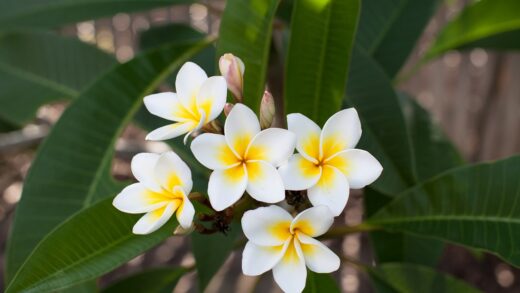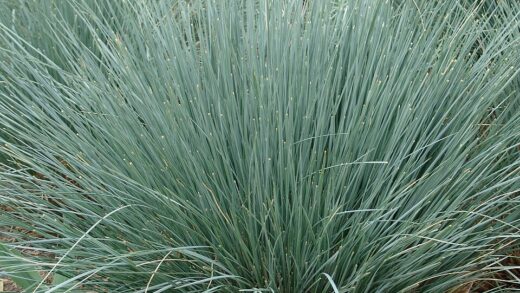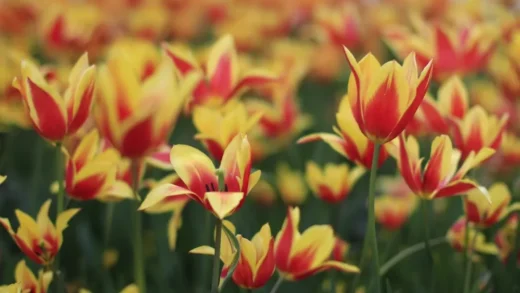Successfully establishing sea thrift in your garden begins with a proper understanding of the planting process, which is crucial for its long-term health and vitality. This resilient perennial, known for its neat, grass-like mounds and charming pom-pom flowers, requires specific conditions to truly flourish. The initial planting phase sets the stage for years of low-maintenance beauty, so investing a little effort at the outset will pay significant dividends. Choosing the right location with ample sunlight and excellent drainage is the most critical first step, as these factors directly mirror its native coastal habitat. Once these foundational requirements are met, the plant is remarkably self-sufficient and rewarding to grow.
Planting sea thrift is a straightforward task, provided you have prepared the site correctly. The ideal time for planting is in the spring or early autumn, which allows the plant to establish its root system during milder weather, avoiding the stresses of extreme summer heat or winter cold. When you are ready to plant, dig a hole that is roughly the same depth as the root ball and slightly wider. It is important not to plant it too deep; the crown of the plant, where the foliage meets the roots, should sit at or just slightly above the level of the surrounding soil.
Before placing the plant in the hole, gently tease out the roots if they are tightly wound or pot-bound. This encourages the roots to grow outwards into the surrounding soil rather than continuing to circle, which can hinder establishment. Place the plant in the center of the hole, ensuring it is upright. Backfill the hole with the native soil, firming it gently around the root ball to eliminate any large air pockets. Avoid amending the backfill soil with rich compost or fertilizer, as sea thrift prefers lean conditions.
After planting, water the area thoroughly to help settle the soil and provide essential moisture to the roots. For the first few weeks, monitor the soil moisture and water as needed to keep it from drying out completely, but do not oversaturate it. This initial watering period is critical for helping the plant transition and begin to develop a robust root system in its new home. Once you see signs of new growth, you can gradually reduce the frequency of watering as the plant becomes more established and self-reliant.
Preparing the ideal planting site
The success of your sea thrift planting hinges almost entirely on site selection and soil preparation. This plant is a sun worshipper and requires a location that receives a minimum of six hours of direct sunlight each day. Without this intense light exposure, the foliage will become weak and leggy, the mounding habit will be less compact, and, most importantly, the plant will produce very few flowers. An open, unshaded area is therefore essential for achieving the dense cushions of foliage and prolific blooms that make sea thrift so desirable.
More articles on this topic
Soil drainage is the other non-negotiable requirement. Sea thrift has a deep taproot that is extremely sensitive to excess moisture and will quickly succumb to rot in heavy, waterlogged soils. Before planting, assess your soil’s drainage by digging a hole and filling it with water; if the water does not drain away within an hour, the drainage is inadequate. To remedy this, you can incorporate generous amounts of horticultural grit, perlite, or coarse sand into the top layer of the soil to improve its structure and porosity.
For gardens with naturally heavy clay soil, creating a dedicated raised bed or a rock garden is often the most effective solution. These elevated planting areas inherently provide the sharp drainage that sea thrift craves, lifting the plant’s root zone above the surrounding damp ground. When filling a raised bed, use a soil mix that is low in organic matter and high in mineral content, such as a blend of topsoil, sand, and fine gravel. This mimics the lean, rocky soils of its native coastal cliffs.
Finally, consider the spacing of your plants. While individual sea thrift plants form neat mounds, they will gradually expand over time. Spacing them approximately 20 to 30 centimeters apart will allow them room to grow to their mature size without becoming overcrowded. Proper spacing ensures good air circulation between plants, which is vital for preventing the development of fungal diseases, particularly in climates with high humidity. This foresight during planting will contribute to a healthier and more visually appealing display in the long run.
Propagation through division
Division is the most common and reliable method for propagating established sea thrift clumps, and it serves the dual purpose of creating new plants while rejuvenating older ones. Over time, typically after three to five years, the center of a sea thrift mound can become woody and less productive, with the most vigorous growth occurring around the edges. Dividing the plant allows you to remove this old central portion and replant the healthy, younger sections. The best time to undertake this task is in early spring, just as new growth begins to emerge.
More articles on this topic
To divide the plant, first carefully excavate the entire clump from the ground using a garden fork or spade, taking care to get as much of the root system as possible. Once the clump is lifted, gently shake off the excess soil so you can clearly see the structure of the roots and crown. You can then pull the clump apart into smaller sections by hand. For larger, more established clumps with a tough, woody center, you may need to use a sharp knife or a spade to cut it into divisions.
Each new division should have a healthy portion of both foliage and roots to ensure its survival and successful establishment. Look for sections from the outer part of the original clump, as these are typically the most vigorous. Discard the old, woody central part of the plant, as it is unlikely to regrow well. Aim to create divisions that are a reasonable size—a small fistful of foliage with a corresponding root mass is a good guideline.
Once you have your new divisions, they should be replanted immediately to prevent the roots from drying out. Plant them at the same depth they were previously growing, in a well-prepared site with excellent drainage and full sun. Water them in thoroughly after planting and keep the soil consistently moist for the first few weeks until they show signs of new growth. This simple method of propagation is an excellent way to increase your stock of sea thrift for free and maintain the health of your existing plants.
Growing from seed
Growing sea thrift from seed is another rewarding method of propagation, although it requires a bit more patience than division. You can collect seeds from your existing plants after the flowers have faded and the seed heads have dried and turned brown. Alternatively, seeds are widely available from commercial suppliers. Starting seeds indoors provides a more controlled environment and typically yields better germination rates than direct sowing in the garden.
For indoor sowing, fill seed trays or small pots with a well-draining, sterile seed-starting mix. Lightly press the seeds onto the surface of the soil; they require light to germinate, so do not cover them with a thick layer of mix. A very light dusting of fine sand or vermiculite is sufficient to hold them in place. Gently water the tray from below or use a fine mist sprayer to avoid dislodging the seeds.
Place the seed tray in a location that receives bright, indirect light and maintain a consistent temperature of around 15 to 20 degrees Celsius. Keep the growing medium consistently moist but not waterlogged. Germination can be somewhat erratic and may take anywhere from two to eight weeks, so patience is key. Once the seedlings have emerged and developed their first true leaves, they can be carefully transplanted into individual pots to grow on.
When the seedlings are large enough and all risk of frost has passed, they can be hardened off and planted out in the garden. To harden them off, gradually expose the young plants to outdoor conditions over the course of a week or two, increasing the duration each day. This process helps them acclimate to the changes in temperature, sunlight, and wind. Plant them in their final positions in a sunny, well-drained spot, and care for them as you would any new sea thrift planting.
Cuttings and other methods
While division and seed propagation are the most common methods, sea thrift can also be propagated from basal cuttings, though this technique is less frequently used by home gardeners. This method is best performed in the spring when the plant is actively growing. A basal cutting is a shoot that is taken from the very base of the plant, ideally with a small piece of the root-bearing crown or rhizome attached, which is known as a heel. This small piece of older tissue at the base of the cutting often encourages more reliable rooting.
To take a basal cutting, carefully clear some soil from around the base of the parent plant to expose the crown. Select a healthy, non-flowering shoot and gently pull it away from the main clump so that it detaches with a small heel of the crown tissue. Trim the lower leaves from the cutting to prevent them from rotting and dip the base in a rooting hormone powder to stimulate root development. This step is not always necessary but can improve the success rate.
Insert the prepared cuttings into a pot filled with a gritty, free-draining compost mix, such as a 50/50 blend of compost and sharp sand or perlite. Water the cuttings gently and place the pot in a propagator or cover it with a clear plastic bag to create a humid environment that reduces water loss from the leaves. Site the pot in a warm, bright location but out of direct sunlight, which could scorch the delicate cuttings.
Check the cuttings regularly and ensure the compost remains moist but not wet. Roots should begin to form within a few weeks. You can test for rooting by giving a cutting a very gentle tug; if you feel resistance, roots have likely developed. Once the cuttings have established a healthy root system and are showing signs of new top growth, they can be potted on into individual containers and grown until they are large enough to be planted out in the garden.


















